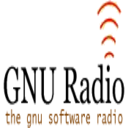Cosin08 - 0.42
Chaos Singularity 2008
| Speakers | |
|---|---|
|
|
Andreas |
| Schedule | |
|---|---|
| Day | Sonntag (2008-07-06) |
| Room | Dachstock |
| Start time | 15:00 |
| Duration | 00:45 |
| Info | |
| ID | 2619 |
| Event type | lecture |
| Track | Technology |
| Language used for presentation | en |
Software Radios with GNU Radio
How it works and why it's fun.

The idea of software defined radio is to create a radio with building blocks written in a high level programming language, running on a general purpose computer. This means that instead of using hardware components, you can just code up your own blocks, which is cheaper and much more flexible.
A software defined radio is a radio that is built entirely or in large parts in software, which runs on a general purpose computer. This means, that instead of using analog circuits or a specialized digital signal processor (DSP) to process a radio signal, the digitized signal is processed by architecture independent high level software running on a general purpose processor (with radio, we mean any device, that transmits and/or receives radio waves, not just a broadcast receiver). While most modern radios contain firmware that is written in some kind of programming language, the important distinction in a software radio is that it is not tailored to a specific chip or platform, and it is therefore possible to reuse its code across different underlying architectures.
GNU Radio is a free software toolkit for implementing software defined radios. It is licensed under the GNU General Public License (GPL), which means that anyone is allowed to use, copy and modify it without limits, provided that extensions are made available under the same license. The goal of GNU Radio is to “bring the code as close to the antenna as possible”, and therefore “turn hardware problems into software problems”, according to the projects founder Eric Blossom. To this end, GNU Radio provides numerous building blocks for signal and information processing, as well as a framework to control the data flow between them. By “wiring together” such building blocks, a user can create a software defined radio, similar to how one might connect physical RF building blocks to create a hardware radio. To allow the use of GNU Radio with live RF signals, the Universal Software Radio Peripheral (USRP) can be used. The USRP is a hardware front end, that can be tuned to a given frequency and either sample the RF spectrum at that frequency, or output a signal according to samples coming from a PC.
This talk will introduce software defined radio, GNU Radio, and the USRP (including a live demo) and show, how you can create your own radios, and why this is so much fun.
Depending on the preferences of the audience, this talk will be either in German or in English. In any case, it will contain some math (yes, some people think that math is fun!) and C++ as well as Python code.
